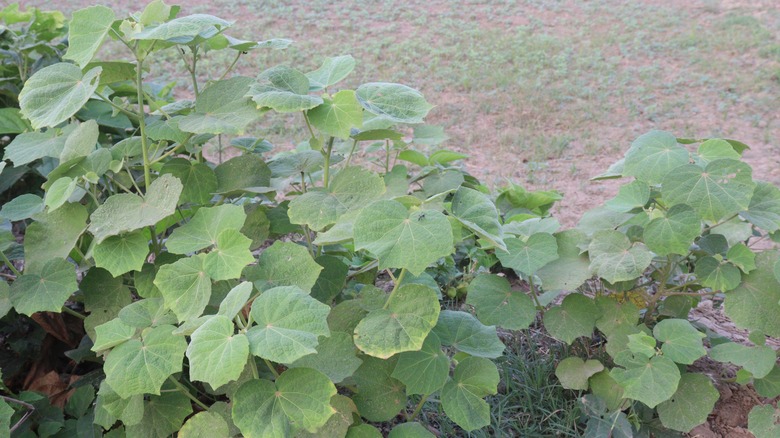Is Velvetleaf A Weed & Should You Let It Grow In Your Garden?
Sometimes it's difficult to tell a beneficial wildflower from an invasive plant. This is why we have problems with Japanese honeysuckle and Chinese wisteria taking over -– someone thought they were simply lovely, aromatic plants. Even now, there are people who think the big blooms of the invasive Japanese wisteria are worth the damage they do to entire ecosystems. On a smaller scale, there's also bindweed, which is a beautiful petunia look-alike that's really an invasive weed. Like these plants, velvetleaf (Abutilon theophrasti) is a lovely annual flower that will take over your outdoor space if you let it grow.
Velvetleaf is a considerable problem in commercial agriculture because it takes water and nutrients from surrounding plants, which can cause crop failure or greatly reduce the harvest. This pretty but demanding plant will do the same if left to grow in your garden. Don't be seduced by the large, velvety leaves and delicate yellow flowers on this noxious weed. While this tall plant grows throughout the U.S., it is on the invasive species list in Michigan, Oregon, Virginia, and Washington. It is also considered a noxious weed in many other states. Wherever you live, you'll want to eliminate velvetleaf as soon as you see it to avoid dealing with it for many years to come.
Why velvetleaf is a problem
A member of the Malvaceae (mallow) family, velvetleaf is native to tropical regions of Asia and India. Like so many invasive species, it was intentionally brought to the U.S. to grow as a fiber crop. This led to another common name, China-jute. For some reason, its usefulness did not transfer here, perhaps because it is so draining on resources. But it did escape cultivation and now grows freely wherever its seeds land.
As a small plant, it can be difficult to discern velvetleaf from its native hibiscus cousins. Since it can grow between 4 and 8 feet tall in one season, it matures quickly. That's when you'll notice the velvety leaves start to emerge, which makes velvetleaf easy to identify. This plant only reproduces via seed. It doesn't seem like it could take over quickly with just that one method, but keep this in mind: one plant can produce up to 17,000 viable seeds that can survive in the ground for more than half a century. If you don't want to spend the next 50 years getting rid of this noxious weed, remove it before the flowers form.
Getting rid of invasive velvetleaf
While there is some confusion about whether or not all non-native plants are considered invasive (the short answer is no), we know this one is, so it must be eliminated as soon as you have a positive identification. If you aren't sure, Google Lens and Apple image search are reliable ways to know if that new plant in your yard is a friend or foe. Velvetleaf seeds sprout as soon as the soil warms and the days get longer, so depending on where you live, you may see seedlings emerge around April. When small, they are very easy to pull by hand. In a tilled garden, working the seedlings back into the soil can help manage their population. When they get bigger, it's a little more challenging.
Since velvetleaf is an annual herbaceous plant, herbicides can be an effective control method, but if it's growing in your garden or landscape, herbicide drift can cause significant harm to your other plants. Because this plant only reproduces by seed, you can greatly reduce the possibility of it returning by removing the plant before the seed pods emerge. You can dig out the entire plant or cut it off at the soil line with a pair of loppers.


